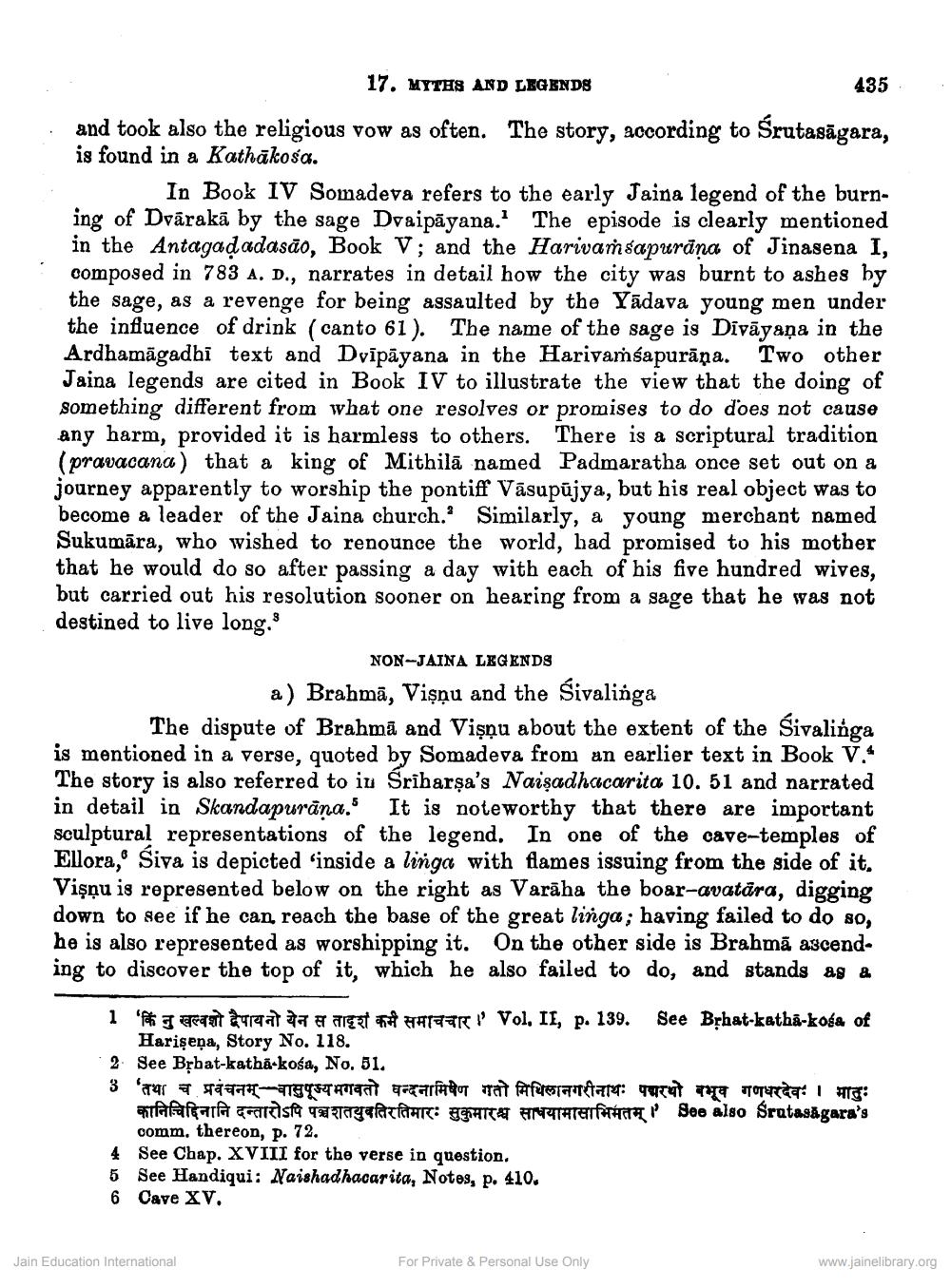________________
17. MYTHS AND LEGENDS
435 and took also the religious vow as often. The story, according to Śrutasāgara, is found in a Kathākosa.
In Book IV Somadeva refers to the early Jaina legend of the burning of Dvārakā by the sage Draipāyana. The episode is clearly in the Antagadadasão, Book V; and the Harivarsapurāna of Jinasena I, composed in 783 A. D., narrates in detail how the city was burnt to ashes hy the sage, as a revenge for being assaulted by the Yādava young men under the influence of drink (canto 61). The name of the sage is Dīvāyaṇa in the Ardhamāgadbi text and Dvīpāyana in the Hariyamsapurāna. Two other Jaina legends are cited in Book IV to illustrate the view that the doing of something different from what one resolves or promises to do does not cause any harm, provided it is harmless to others. There is a scriptural tradition (pravacana) that a king of Mithilā named Padmaratha once set out on a journey apparently to worship the pontiff Vāsupūjya, but his real object was to become a leader of the Jaina church. Similarly, a young merchant named Sukumāra, who wished to renounce the world, had promised to his mother that he would do so after passing a day with each of his five hundred wives, but carried out his resolution sooner on hearing from a sage that he was not destined to live long,
NON-JAINA LEGENDS
a) Brahmä, Vişņu and the Sivalinga The dispute of Brahma and Vişņu about the extent of the Sivalinga is mentioned in a verse, quoted by Somadeva from an earlier text in Book V.* The story is also referred to iu Śrībarşa's Naişadhacarita 10. 51 and narrated in detail in Skandapurāna. It is noteworthy that there are important sculptural representations of the legend. In one of the cave-temples of Ellora, Siva is depicted inside a linga with flames issuing from the side of it. Vişņu is represented below on the right as Varāha the boar-avatāra, digging down to see if he can reach the base of the great linga; having failed to do so, he is also represented as worshipping it. On the other side is Brahmā ascending to discover the top of it, which he also failed to do, and stands as a
1 of Jantareata a arget i TFI Vol. II, p. 139. See Byhat-katha-kośa of
Harişeņa, Story No. 118. 2. See Bțbat-katha-kośa, No. 51. 3 'तथा च प्रवचनम् वासुपूज्यभगवतो धन्दनामिषेण गतो मिथिलानगरीनाथः पारथो बभूव गणधरदेवः । मातुः
aitafarla TISU Tarafa farc: HATTENTAT TE I See also Sratasågara's
comm, thereon, p. 72. 4 See Chap. XVIII for the verse in question. 5 See Handiqui: Naishadhacarita, Notes, p. 410. 6 Cave XV.
Jain Education International
For Private & Personal Use Only
www.jainelibrary.org




